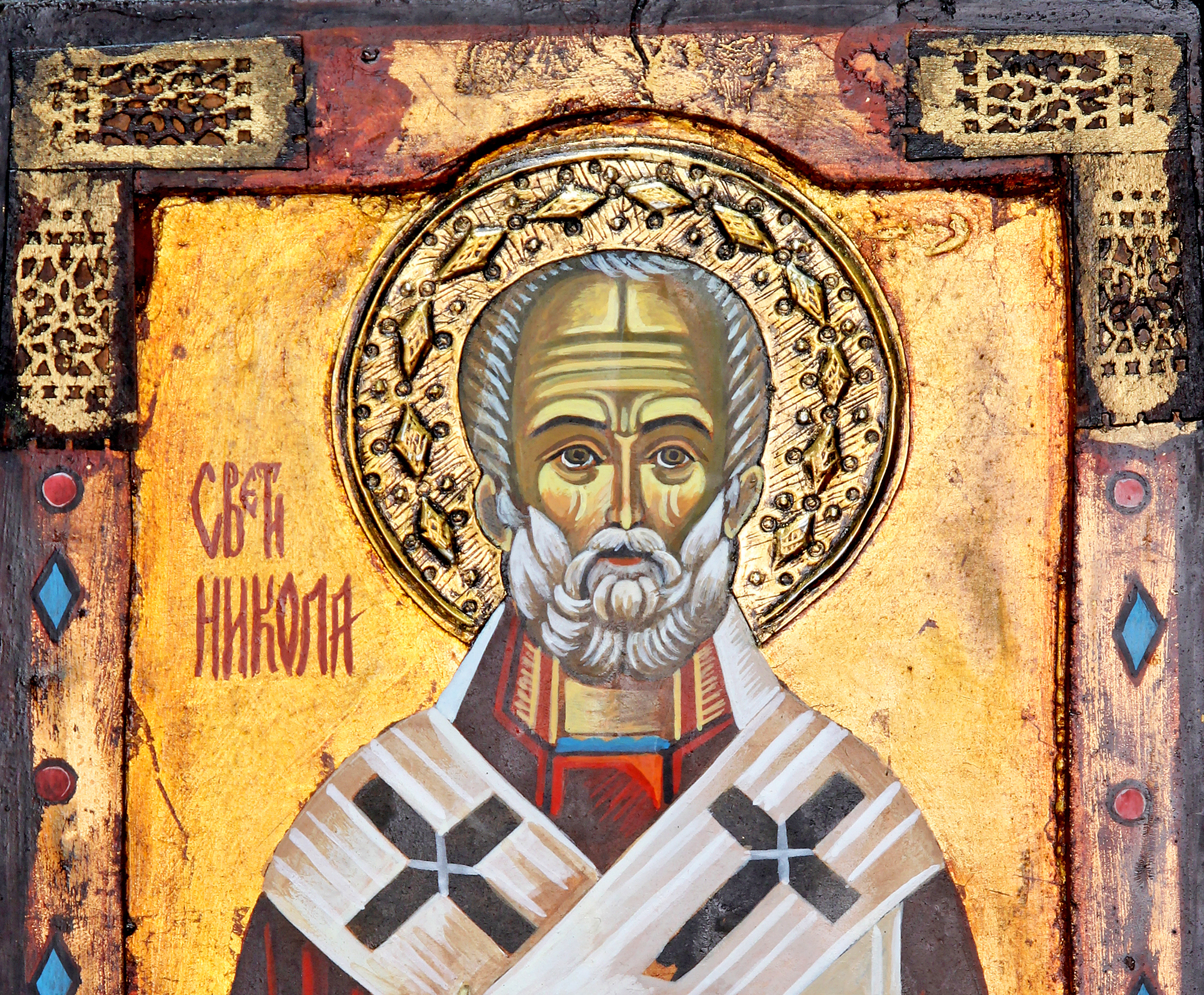New Oxford University research has revealed that bones long venerated as relics of the saint, do in fact date from the right historical period.
One of the most revered Christian saints, St Nicholas’ remains are held in the Basilica di San Nicola, Bari, Southern Puglia, since 1087, where they are buried in a crypt beneath a marble altar, with others preserved in the Chiesa di San Nicolo al Lido in Venice.
Using a micro-sample of bone fragment, Professor Tom Higham and Dr Georges Kazan, the Directors of the Oxford Relics Cluster at Keble College's Advanced Studies Centre, have for the first time tested one of these bones. The radiocarbon dating results pinpoint the relic’s age to the fourth century AD - the time that some historians allege that St Nicholas died (around 343 AD). The results suggest that the bones could in principle be authentic and belong to the saint.
Professor Higham said: ‘Many relics that we study turn out to date to a period somewhat later than the historic attestation would suggest. This bone fragment, in contrast, suggests that we could possibly be looking at remains from St Nicholas himself.’
St Nicholas is thought to have lived in Myra, Asia Minor, which is now modern day Turkey. According to legend he was widely known for his generosity, a trait that inspired the legend of Father Christmas as a bringer of gifts on Christmas Day.
Believed to have been persecuted by the Emperor Diocletian, the saint died in Myra, where his remains became a focus of Christian devotion. His relics were carried away by a group of Italian sailors and transported to Bari, where the bulk of them sit to this day in the Basilica di San Nicola.
The bone analysed is owned by Father Dennis O'Neill, of St. Martha of Bethany Church, Shrine of All Saints, in Morton Grove Illinois, USA. The relic originally came from Lyon in France.
Fr. O'Neill has acquired his collection over many years, mainly from churches and private owners in Europe, and includes a relatively large bone fragment which has been identified as part of a human pelvis, believed to be a relic of St Nicholas.
Interestingly, the Bari collection does not include the saint's full pelvis, only the left ilium (from the upper part of the bone). Since Fr. O’Neill’s relic is from the left pubis (the lower part of the bone), this suggests that both bone fragments could be from the same person. This fact attracted Dr. Kazan’s attention, prompting the study.
Dr Kazan said: ‘These results encourage us to now turn to the Bari and Venice relics to attempt to show that the bone remains are from the same individual. We can do this using ancient palaeogenomics, or DNA testing. It is exciting to think that these relics, which date from such an ancient time, could in fact be genuine’.
 Relic of St Nicholas (pelvis fragment) at St. Martha of Bethany Church/Shrine of All Saints, Morton Grove IL, USA Image Credit copyright T. Higham & G. Kazan
Relic of St Nicholas (pelvis fragment) at St. Martha of Bethany Church/Shrine of All Saints, Morton Grove IL, USA Image Credit copyright T. Higham & G. KazanThe relics held in Venice consist of as many as 500 bone fragments, which an anatomical study concluded were complementary to the Bari collection, suggesting that both sets of relics could originate from the same individual. It remains to be confirmed what fragments of the pelvis are contained amongst the Venice relics, if any.
The archaeologists’ work has revealed that the bone has been venerated for almost 1700 years, making it one of the oldest relics that the Oxford team has ever analysed.
As radiocarbon dating technology has become more sophisticated in recent years, ancient relics have become more accessible in ways that previously would have been considered too invasive to study.
Dr Kazan added: ‘Where once we needed physical portions of a bone sample, we can now test milligram-sized micro-samples - opening up a new world of archaeological study.’
In the 16th century stories about St Nicholas become popular, and the legend of Father Christmas was born. December 6 is known and celebrated in several European countries – particularly Holland, as St Nicholas Feast Day. On the eve of the feast, children leave out clogs and shoes to be filled with presents.
Of the possible authenticity of the relic itself, Professor Higham concludes: ‘Science is not able to definitely prove that it is, it can only prove that it is not, however’.
